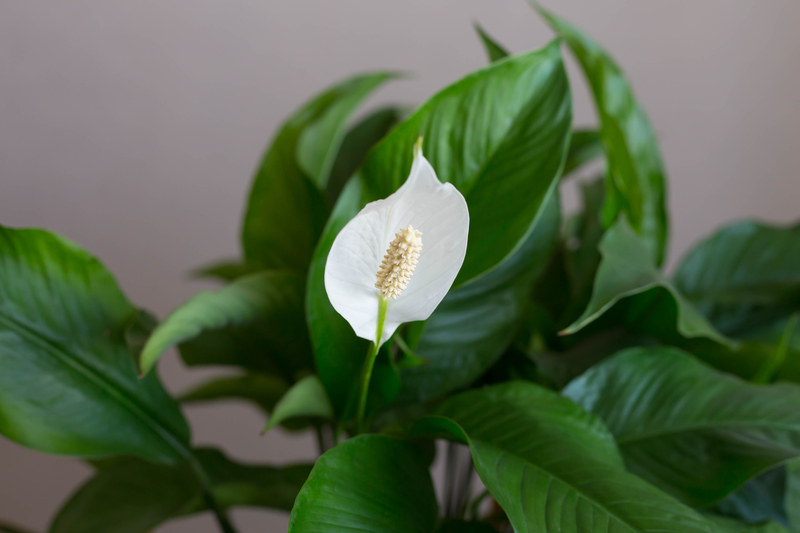Stay Green This Summer: Essential Lawn Care for Dry Weather
As the summer sun blazes and dry weather takes hold, many homeowners face the yearly battle of keeping their lawns lush and healthy. If you want your backyard to remain an oasis rather than turn into a parched patchwork, understanding summer lawn care for dry conditions is essential. This comprehensive guide will teach you how to protect, nourish, and maintain a beautiful landscape, even during the hottest, driest months of the year.
Why Dry Weather Challenges Your Lawn
Summertime often brings prolonged dry spells and soaring temperatures, increasing the risk of drought stress for your grass. Without appropriate care, your once-vibrant green lawn can quickly brown and thin, inviting weeds and pests. Understanding the impact of dry weather is critical to developing an effective lawn care strategy.
- High temperatures increase water evaporation from both soil and grass blades.
- Low rainfall means less natural irrigation.
- Soil compaction and poor water retention worsen drought symptoms.
- Stressed grass is less able to resist diseases and weed invasions.
Recognizing Signs of Drought Stress
Before implementing summer lawn care for dry weather, you should know how to recognize the signs of drought damage. Key indicators include:
- Grass turns blue-gray or dull green
- Footprints linger after walking on the lawn
- Browning or thinning patches appear
- Lawn feels crunchy or brittle underfoot
Take action immediately if you notice these symptoms, as early intervention makes recovery much easier.

Foundations of Lawn Care for Dry Summer Weather
Choose Drought-Tolerant Grasses
Your first line of defense is a lawn made up of drought-resistant grass varieties. Some species are inherently better suited for dry, hot climates. Consider overseeding or replanting with:
- Bermuda grass - Thrives in full sun, highly heat tolerant
- Zoysia grass - Dense, resilient, and water-efficient
- Buffalograss - Extremely drought tolerant, perfect for low-maintenance lawns
- Tall fescue - Deep roots support survival through dry spells
Soil Preparation and Care
Healthy soil is key for water retention. Before each summer, test your soil for compaction and nutrient content. Aim for loose, loamy soil with lots of organic matter. To prepare:
- Aerate your lawn to improve water and air penetration
- Add compost or organic fertilizers for better moisture retention
- Topdress with fine mulch or compost to insulate roots
Smart Watering Strategies for a Green Summer Lawn
Water Deeply, Not Frequently
Proper hydration is vital during hot, dry weather. However, shallow watering wastes water and encourages weak root systems. Instead, irrigate less often but more deeply, so roots grow downward where they're less affected by surface evaporation.
- Water early in the morning to reduce loss through evaporation
- Provide about 1 inch of water per week (including rainfall)
- Avoid watering in the hottest part of the day, to prevent scalding grass
- Check soil moisture with a screwdriver - if it penetrates easily, the ground is moist enough
Use Efficient Irrigation Methods
Cut back on waste and promote even distribution. Consider:
- Soaker hoses or drip irrigation for targeted, efficient watering
- Rotating or oscillating sprinklers for even coverage on large lawns
- Rain barrels to collect water for use during dry spells
Mowing Techniques That Protect Your Lawn from Drought
Raise Your Mower Deck
Mowing too short is one of the fastest ways to brown your lawn during dry weather. Taller grass shades the soil, helping retain moisture and keeping roots cool. Follow these mowing tips:
- Keep grass 3 to 4 inches high during drought conditions
- Never remove more than one-third of the grass blade at a time
- Sharpen your mower blade to reduce tearing
- Leave grass clippings on the lawn to act as natural mulch
Avoid Mowing When Stressed
If your lawn is dormant or visibly drought-stressed, skip mowing until recovery. Cutting stressed grass can cause more damage than good.
Fertilizing for Healthy Growth in Dry Weather
Applying fertilizer during drought or extreme heat isn't always advisable. Overly lush growth can increase water requirements and stress. Follow these fertilizing rules:
- Use slow-release, organic fertilizers to avoid burning the lawn
- Fertilize in early spring or fall, rather than peak summer
- If you must fertilize mid-summer, water deeply before and after
- Calcium and potassium products help grass tolerate hot, dry conditions
Mulching and Other Moisture Retention Techniques
Grasscycling: Nature's Mulch
Grasscycling refers to leaving clippings on the lawn after mowing. This provides a natural mulch layer that returns nutrients and helps retain soil moisture.
Mulch Around Trees and Garden Beds
Protecting your landscape's roots extends beyond the lawn. Spread 2-4 inches of organic mulch (such as chopped leaves or bark) around trees, shrubs, and flower beds to minimize surface evaporation and moderate soil temperature.
Lawn Care Maintenance Tips for Dry Summers
Weed Management
Weeds compete aggressively for limited water and nutrients. Keep them at bay by:
- Hand-pulling weeds after rain or watering (soil is softer)
- Using an organic, selective herbicide if needed (avoid in intense heat)
- Maintaining dense, healthy turf to naturally outcompete weeds
Minimize Foot Traffic
Lawns under drought stress are easily damaged by frequent walking or heavy play. Try to limit activity on sensitive areas until recovery after rain or irrigation.
Monitor for Pests and Diseases
Drought-stressed lawns are more prone to infestations from grubs, chinch bugs, and fungal diseases. Watch for:
- Odd patches of brown or wilting, especially in random spots
- Unusual insect activity or visible larvae
- Mold, rust, or other fungal signs especially after sporadic rains
Address issues quickly with targeted, lawn-safe products, or consult a local lawn care professional for best results.
Improving Your Lawn's Drought Resilience for the Future
Once you've stabilized your landscape for the present summer, it's time to look ahead. Sustainable lawn care is about building drought resilience over time. Here's how:
- Overseed with drought-tolerant grasses each fall to thicken turf
- Aerate your lawn annually to combat compaction
- Incorporate more organic matter (compost, biochar) every season
- Consider converting sections to native landscaping or xeriscaping for permanent water savings
Native Plants and Xeriscaping
If achieving a perfectly green lawn is too demanding in your region, blend your yard with drought-tolerant native plants or ornamental grasses. Xeriscaping replaces thirsty turf with beautiful, low-water alternatives, ensuring an attractive landscape all summer long--with much less effort and expense.

Frequently Asked Questions About Summer Lawn Care for Dry Weather
1. How often should I water my lawn in dry weather?
Water deeply and infrequently, generally once or twice a week, providing about 1 inch of water each time. Adjust for your local rainfall and temperature conditions.
2. My lawn has turned brown. Is it dead?
Most cool-season grasses go dormant during drought, turning brown but not dying if dormancy doesn't last more than a month. Warm-season grasses can also recover if watered before roots dry out completely.
3. Should I fertilize my lawn during a drought?
Fertilizing during extreme heat or drought can do more harm than good. Wait until conditions improve, or use low-nitrogen, slow-release formulations very sparingly.
4. What's the best mowing height for summer drought?
Keep your mower set to between 3 and 4 inches. Taller grass shades soil, reduces evaporation, and encourages deeper roots.
5. What is the best drought-tolerant grass for hot summers?
Bermuda, zoysia, and buffalograss are top choices for most hot, dry climates. For cooler northern zones, tall fescue has excellent drought resistance.
Conclusion: Enjoy a Green, Resilient Lawn All Summer Long
Summer doesn't have to spell disaster for your lawn. By adopting smart, water-wise techniques and proactive maintenance, you can keep your grass green and thriving even under scorching, dry conditions. Start with the right grass varieties, improve your soil's health, water efficiently, mow wisely, and plan for long-term drought resilience. With these essential lawn care strategies for dry weather in your toolkit, your home will continue to boast an inviting, vibrant outdoor space--even in the hottest months of the year.
If you're serious about having the best lawn on the block, bookmark this guide and integrate these tips into your weekly lawn care routine. Consistency, patience, and a little expert know-how will ensure your lawn stays green this summer and for many summers to come.